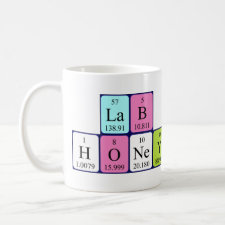
Authors: Wang RJ, Ma YX, Lu CP, Li T, Du XY
Article Title: Preparation and Adsorption Property of Glutathione Magnetic Molecularly Imprinted Polymers.
Publication date: 2014
Journal: Acta Chimica Sinica
Volume: 72
Issue: (5)
Page numbers: 577-582.
DOI: 10.6023/A14030196
Alternative URL: http://sioc-journal.cn/Jwk_hxxb/EN/abstract/abstract344403.shtml
Abstract: The aim of this work was to produce a kind of magnetic molecular imprinted polymers (MMIPs) with core-shell structure and good magnetic separation performance. Compared with the preparation of traditional MIPs, a novel process was adopted to prepare MMIPs with good simplicity, flexibility and selectivity, in which Fe3O4 NPs were firstly prepared by a reverse microemulsion method, and subsequently directly added to the mixed solution to undergo the polymerization reaction without washing and drying. This method avoids availably the agglomeration and oxidation of Fe3O4 NPs. The MMIPs for glutathione (GSH) specific recognition (GSH-MMIPs), with core-shell structure, were prepared via one-step method polymerization, in which GSH as template molecule, N-vinylpyrrolidone (NVP) and acrylamide (AM) as functional monomers, N,N'-methylene bisacrylamide as crosslinker, H2O2-Vc as initiator and Fe3O4 nanoparticles (NPs) modified with γ-methacryloxypropyltrimethoxysilane (KH-570) as magnetic carrier. The as-prepared polymers were characterized by using of X-ray diffraction (XRD), transmission electron microscopy (TEM), Fourier transform infrared (FT-IR) spectroscopy and vibrating sample magnetometer (VSM). The results demonstrated that an imprinted polymer layer was successfully coated onto the surface of modified Fe3O4 NPs, resulting in a narrow diameter distribution and good magnetic responsibility. The specific adsorption equilibrium and selectivity were evaluated by batch rebinding studies. The Scatchard analysis showed that there were two kinds of binding sites in the GSH-MMIPs, the dissociation constants were 8.786 x 10-4 mol/L and 5.424 x 10-3 mol/L, and the corresponding maximum adsorption capacities of GSH onto GSH-MMIPs were 49.195 mg/g and 155.003 mg/g, respectively. The selectivity of the GSH-MMIPs was also evaluated to determine the rebinding capability of GSH and its analogues, compared with that of the magnetic non imprinted polymers (MNIPs) with similar chemical components. The GSH-MMIPs with high imprinting factor of 3.99 indicated that it was of good selectivity. This protocol was further employed for the extraction and separation of GSH from an aqueous solution.
Template and target information: glutathione, GSH
Author keywords: magnetic nanoparticles, molecularly imprinted polymer, Glutathione, adsorption



Join the Society for Molecular Imprinting

New items RSS feed
Sign-up for e-mail updates:
Choose between receiving an occasional newsletter or more frequent e-mail alerts.
Click here to go to the sign-up page.
Is your name elemental or peptidic? Enter your name and find out by clicking either of the buttons below!
Other products you may like:
 MIPdatabase
MIPdatabase









